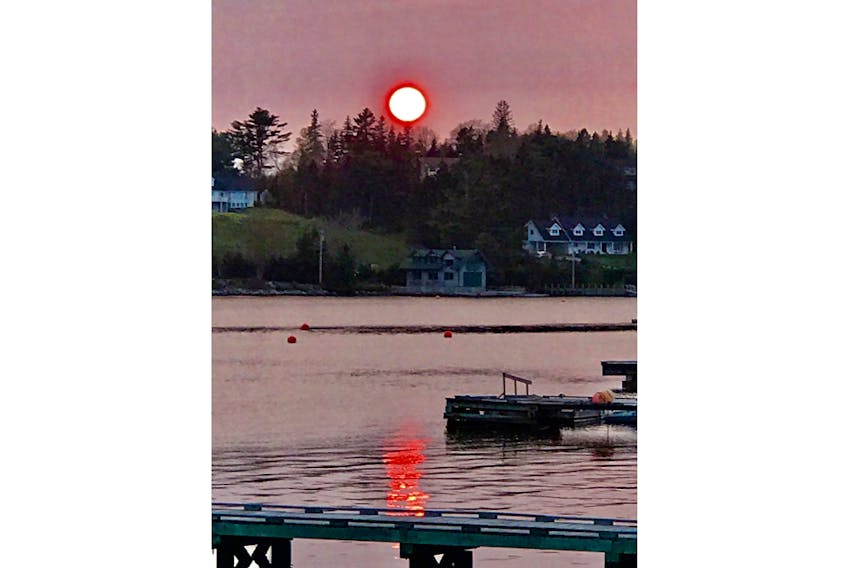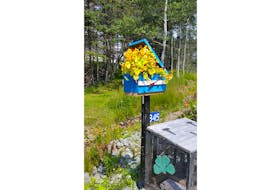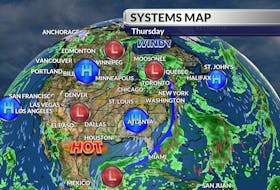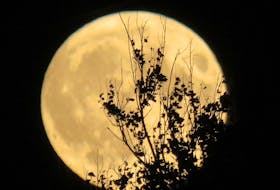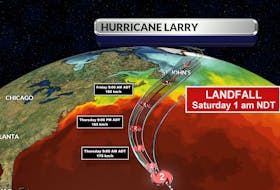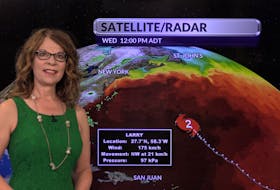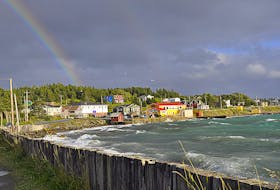Last Friday, Carol Hansen from Chester, N.S., couldn’t help but notice how eerie the late day sun looked as it dipped in the western sky. Carol commented on how it was setting through grey skies May 31. That veil of grey was not a layer of cloud, but smoke – smoke from the western wildfires.
Carol goes on to say the sun appeared white with a red ring around it, but did not cast a red glow on water or land as is often the case.
The science behind this is much the same as what causes red sunsets and sunrises. First things first: the sun shines white light down on Earth. Technically, the sky is white around the intensely bright sun and only looks blue away from the sun because of light scattering. The blue end of the colour spectrum is closest to the size of the air molecules; when the air molecules scatter white light, we see a blue sky.
The sun’s white light is made up of the colours of the rainbow: red, orange, yellow, green, blue, indigo and violet. Each colour has a different wavelength, with colours on the red end having longer wavelengths than those on the blue end.
When the sun is high in the sky, light doesn’t pass through much atmosphere or atmospheric debris, so we get good, bright white light. When the sun is close to the horizon, light has more atmosphere to pass through, and the extra debris blocks out more of the short-wavelength colours; that’s the blue end of the spectrum, so the sun, sky and clouds turn various shades of red and orange.
The same principle holds true for the red-ringed sun that cast an eerie glow at day’s end in Chester. The heavy smoke blocked out the blue end of the spectrum and the smoke and dust particles were so dense that most of the red that ringed the setting sun was behind a heavy wall of grey.
An eerie sight indeed and perhaps a little pathetic fallacy: attributing human qualities and emotions to inanimate objects of nature.
- Have a weather question, photo or drawing to share with Cindy Day? Email [email protected]
- Want more weather information? Visit your weather site.
Cindy Day is the chief meteorologist for SaltWire Network.

